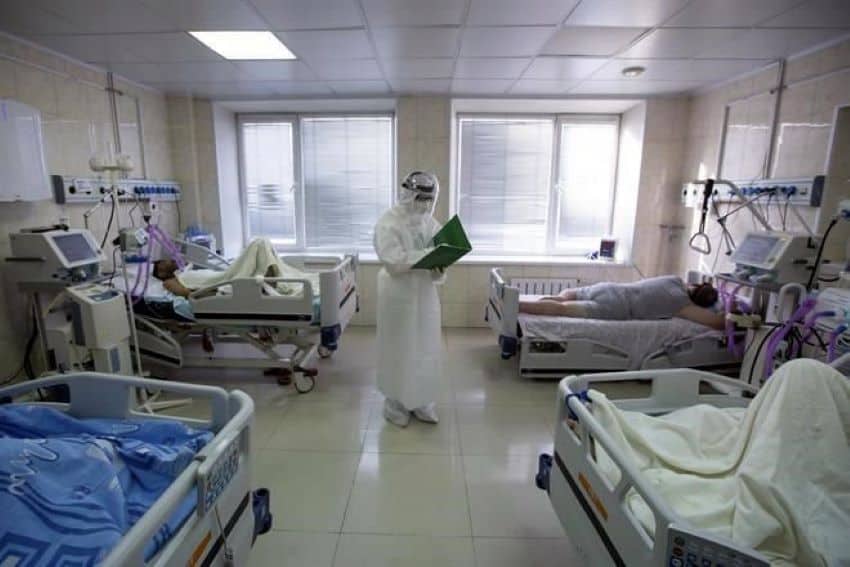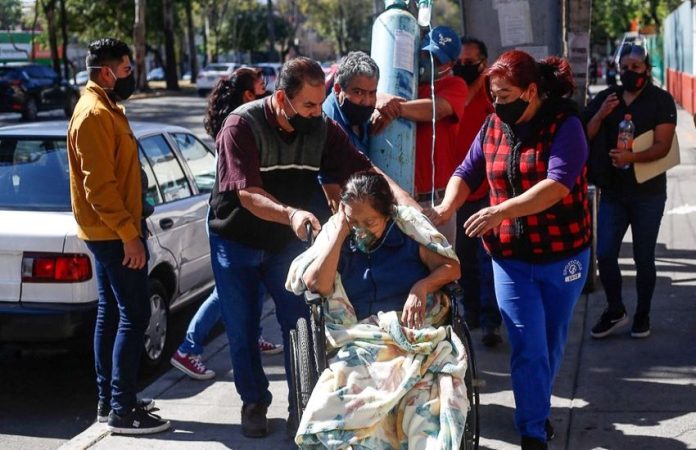Coronavirus patients admitted to public hospitals in Mexico are far more likely to die than those who are treated in private hospitals, according to a study commissioned by the World Health Organization.
More than 50% of coronavirus patients admitted to Mexican Social Security Institute (IMSS) hospitals died in 2020, according to data cited in Mexico’s Response to Covid-19: A Case Study by the Institute for Global Health Sciences (IGHS). Approximately 30% of Covid patients treated in other types of public hospitals, those operated by the federal Health Ministry and by the State Workers Social Security Institute (ISSSTE), succumbed to the disease.
Yet only about 20% of Covid-19 patients admitted to private healthcare facilities lost their lives to the disease.
Jaime Sepúlveda, the executive director of the IGHS and one of the authors of the study, told the newspaper Reforma that the high mortality rate in the public health system was due to the lack of medical personnel who knew how to operate mechanical ventilators and treat severe respiratory illness.
The government added beds in public hospitals, but the higher capacity was not accompanied by an increase in sufficiently trained health workers, he said.
Increasing the number of beds in the public health system, including critical care beds, was “probably necessary” but the measure wasn’t enough on its own to save the lives of many patients.
“A lot of patients arrived at IMSS [hospitals] … in an advanced stage of the disease; they [basically] arrived to die,” he added.
Sepúlveda also said the federal government hasn’t invested sufficiently in the public health system and has favored health policies that result in minimum intervention in the treatment of coronavirus patients.
“In summary, the government failed,” he said.
The same IGHS study found that about 190,000 deaths could have been avoided in Mexico last year if the government had managed the coronavirus pandemic better.
Sepúlveda acknowledged that the current government is not entirely responsible for the poor state of the public health system, noting that it inherited a broken system that has faced chronic underinvestment since 2016. But the current government has made further aggressive funding cuts. In some cases, it has not exercised all resources allocated to different parts of the public health sector, he said.

“We’ve seen institutional erosion, … poorly executed reforms … such as [the creation of] Insabi,” Sepúlveda said, referring to the National Institute of Health for Well-being, a new federal agency that manages the universal health plan that replaced the Seguro Popular program.
He also criticized the government’s centralization of the process to purchase medications, a move that critics say has caused or exacerbated shortages.
The IGHS study also noted that more than half of all Covid-19 deaths in Mexico last year occurred in people aged below 65, whereas people under that age only accounted for 19% of fatalities in the United States.
Sepúlveda said the high number of Covid-19 fatalities — the official death toll rose to 210,812 on Wednesday but the Health Ministry has acknowledged that the real toll is above 300,000 — is largely due to serious deficiencies in the federal government’s communication with the public during the pandemic and its overall failure to manage the crisis effectively.
Among the government’s communication shortcomings are that it has never been a forceful advocate of face masks and that early in the pandemic it encouraged people not to seek medical treatment in the hospital if they didn’t have serious Covid-19 symptoms.
The IGHS chief also said the government has effectively privatized management of the pandemic.
“[The government] has left the management of the pandemic to the highest bidder — local and state governments, civil society. That’s effectively privatization of a public emergency,” Sepúlveda said.
He said that the nation’s poorest, people who work in Mexico’s vast informal sector and citizens who lived in crowded homes have been hit hardest.
“They’re the ones who have suffered from this government inaction and incompetence the most,” Sepúlveda said.
He urged the government to listen to health experts from outside its ranks — the IGHS study found that the government hadn’t done that when making key decisions — and to “correct the course” with regard to management of the pandemic.
“In 2021, we’ll unfortunately still have a prolonged pandemic, but interventions and public policies can still be made that … reduce [virus] transmission chains and avoid the extremely high morbidity and mortality rates,” Sepúlveda said.
Source: Reforma (sp)
